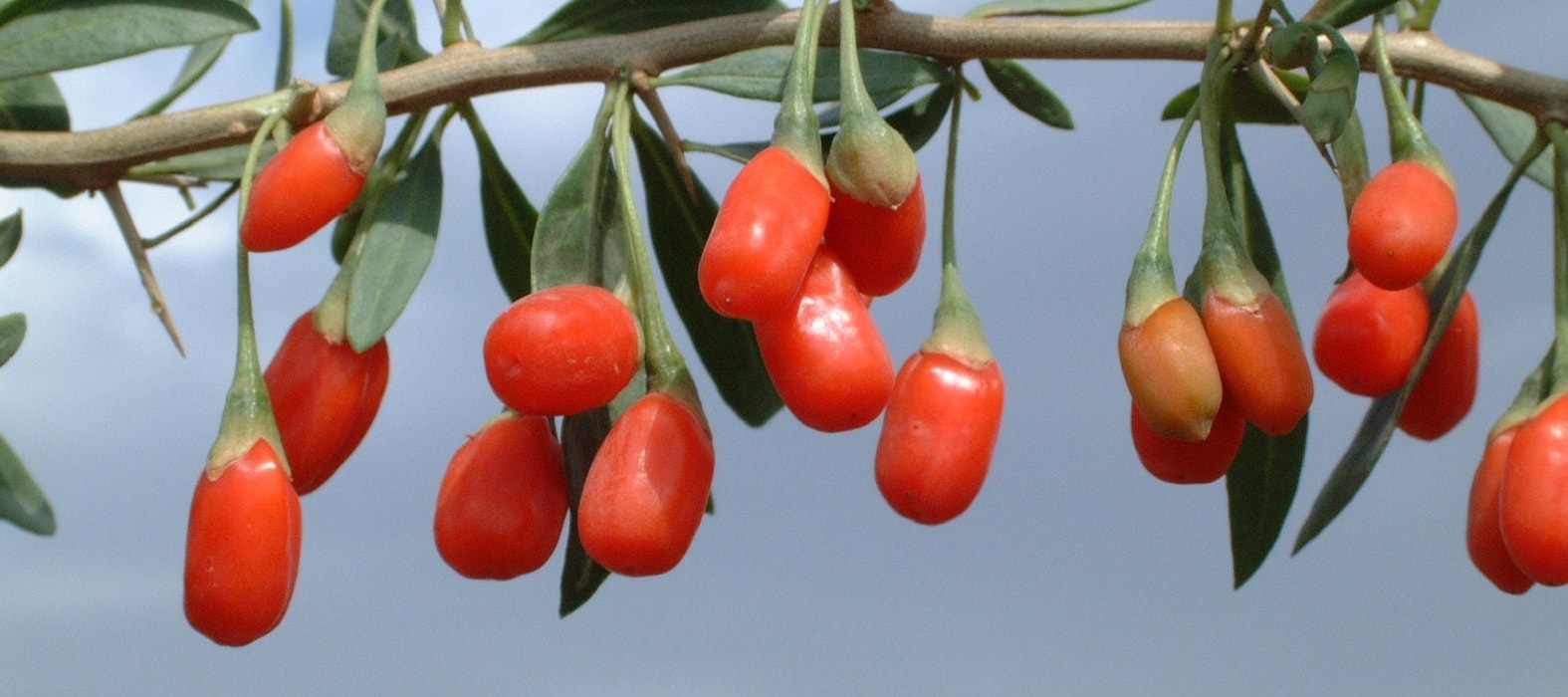
Cultivation, harvest and drying of Goji berries
a concentrate of vitamins, straight from the garden!
Contents
Growing your own Goji berries, small fruits from the Lycium of China, is easy… just as easy as drying them. This bush requires only limited maintenance. Discover our tips for planting it, caring for it, and also preserving its berries, a true concentrate of vitamins and minerals.
Location: where to plant Goji?
The Goji or Wolfberry (Lycium barbarum) is a small bush that can be grown in the ground or in a pot, both indoors and outdoors.
Drought-resistant and very hardy, the Goji can be found throughout France, from North to South. It will simply be more productive in a rich and cool soil, even calcareous with a sunny exposure. The Goji fits perfectly into ornamental gardens and can easily be trained due to its long branches. It is a beautiful bush that can be included in a wild hedge, alongside currant bushes and flowering shrubs, or trained with garden blackberries, which are thornless.
Read also
Drying harvested fruits from the gardenPlanting the Goji Berry: When and How?
Planting of the Goji ideally takes place in autumn or spring outside of frost periods.
To do this, dig a hole 50 cm in all directions with a spade. In heavy soil, place a layer of gravel at the bottom of the hole to improve drainage, then add a mixture of potting soil, crushed horn, and garden soil.
The Lycium can be trained as a bush, in open ground or in a large pot, or it can be trained against a support. Water regularly after planting to ensure good establishment.

Discover other Goji berry bush
View all →Available in 0 sizes
Available in 1 sizes
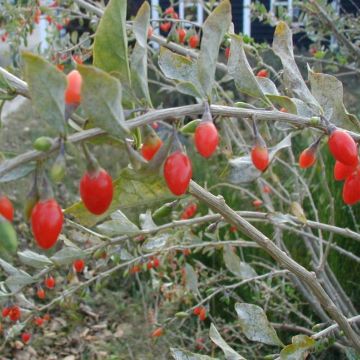
Available in 2 sizes
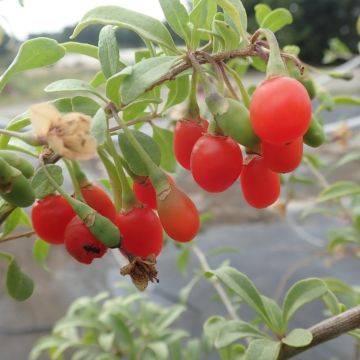
Available in 1 sizes
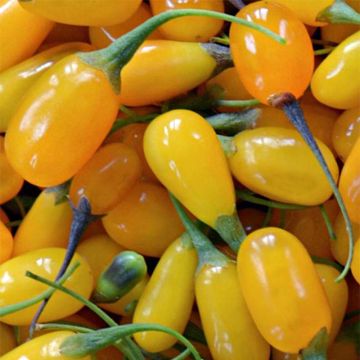
Available in 1 sizes
Available in 1 sizes
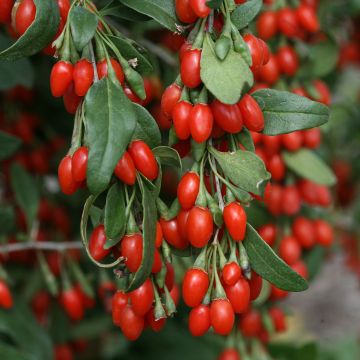
Available in 1 sizes
Available in 1 sizes
Available in 1 sizes
During cultivation: the care to provide
Growing the Goji Berry is simple, requiring very little care:
- Water during prolonged dry spells, once a week, thoroughly. If the young plant is grown in a pot, it will need watering every two to three days in summer, depending on the heat and dryness.
- Apply an organic fertiliser or well-decomposed compost once a year, in March.
- Then, install a mulch at the base to retain moisture in summer.
Pruning the Goji involves:
- Between March and June: remove dead branches with a pruning shear that occurred over winter and prune every other branch to 50 cm above the ground.
- In summer: Pinch the tips of the stems.
Read also
How to dry cranberries?The harvest of Goji berries
Goji berries are harvested from August to October, when they are red and tender to the touch. The harvest is optimal from around the 4th year. Wait for the complete ripening of the fruits before picking them, as, like all fruits in the Solanaceae family, green berries are toxic.
Drying Goji Berries
Goji berries can be stored for only 2 to 3 days after harvesting and are consumed fresh or as juice.
For longer storage, it is possible to dry them. Drying can be done, by choice:
- using a food dehydrator if you have one (12 to 24 hours of drying), or more simply,
- in a low-temperature oven if your oven allows it (around 35°C, a temperature below 40°C)
- by spreading the berries on wooden trays and leaving them to dry in the sun (not scorching) for several weeks.
The berries can then be consumed dried or rehydrated in a little water or fruit juice.
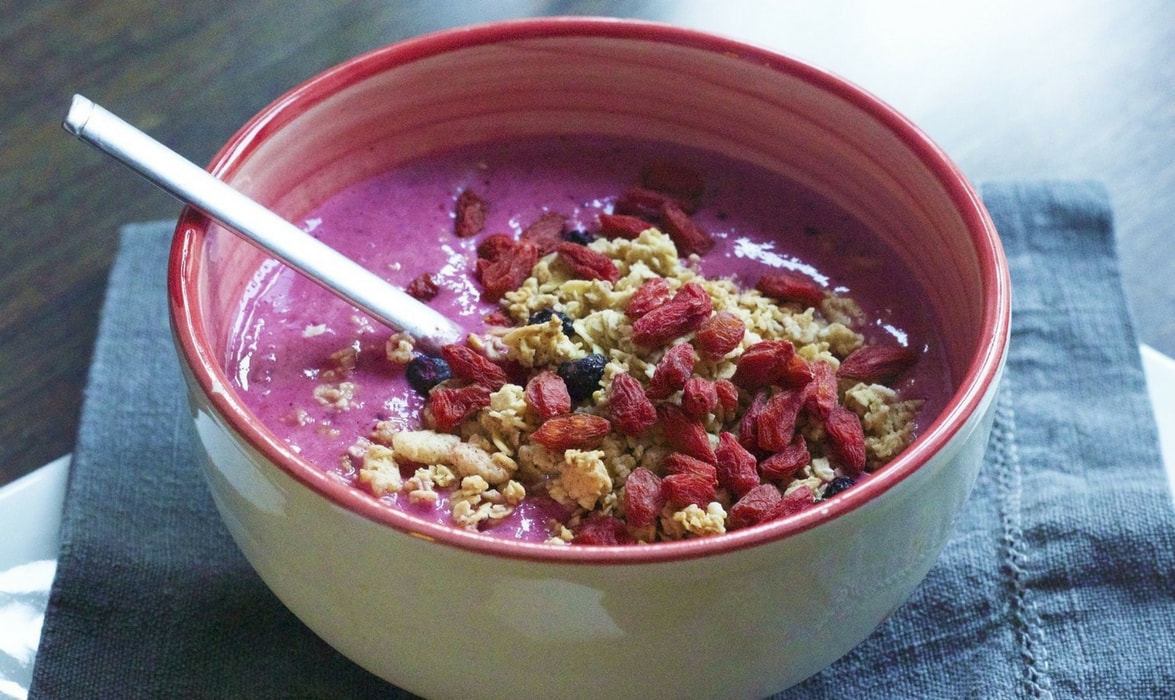
- Subscribe!
- Contents































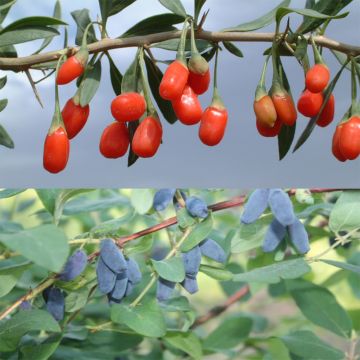
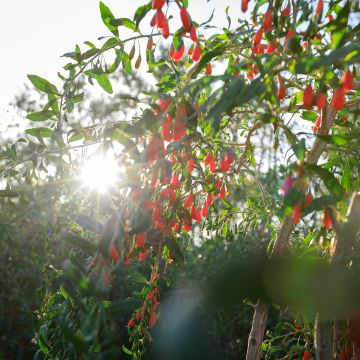
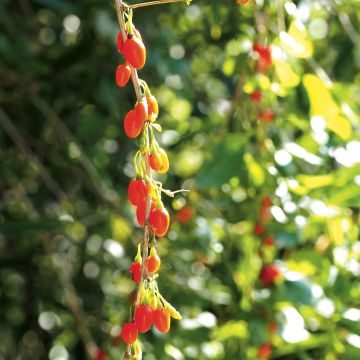
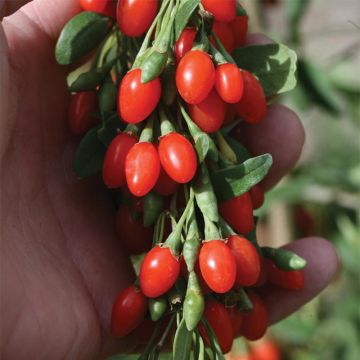
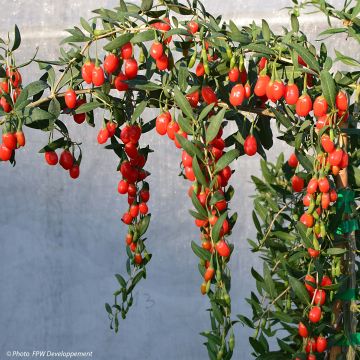
Comments